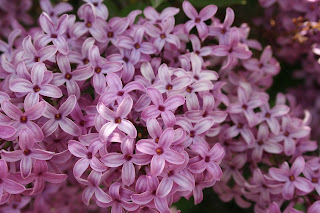 |
| A horse drawn wagon tour gave insights into the history of Edmonton's Beverly community. |
Here in the Edmonton area, we have taken in several events
in the 19th Annual Historic Festival and Doors Open.
 |
| Mt. Pleasant Cemetery. |
One evening we participated in an informative walking tour of Edmonton’s Mt. Pleasant Cemetery, the final resting place of many Edmonton residents.
 |
| Doing laundry the old way. |
The next afternoon we visited the Beverly Historic Interpretive Centre which focuses on life in the 1930s when area homes lacked electricity, piped water and sewage services.
Beverly was established as a coal mining town and became part of Edmonton in 1961. We were amazed to learn that William Humberstone, who
founded a brick and coal company in 1881 on the banks of the North Saskatchewan
River, had walked to Edmonton from Winnipeg with an ox and a cart, a 3 month
journey. The Beverly area had at least 50 coal mines in the first half of the
20th century.
 |
| It was a beautiful evening for a horse drawn tour. |
Later we enjoyed a guided tour in a horse drawn wagon of
some of the historical locations in Beverly.
 |
| Restored Old Stone House in Onoway area. |
Saturday we had a delicious lunch at The Old Stone House
near Onoway and learned about the building of the house during the 1930s and
40s and its recent restoration. Stone houses are common in Europe and Eastern
Canada but rare in Alberta.
 |
| Horse barn at Old Stone House. |
We loved the old leaning horse barn at the Old Stone House. The barn features a bit of decoration.
 |
| Another old barn. |
While out in the country we also stopped at another old barn and a monument to those who settled in Alberta in its early days.
 |
| Monument to early settlers. |
 |
| St. Joachim Church. |
Sunday we visited Saint
Joachim’s Catholic Church in Edmonton’s city centre. There we heard a talk on the
history of the parish from the arrival of the first Catholic missionaries at
Fort Edmonton in 1838.
 |
One of St. Joachim's
painted glass windows. |
Over time four churches were built in the parish including the current brick, Gothic structure, started in 1898. It is a French language church and we were pleased that this year they added an English language tour.
 |
Surviving old house on
Edmonton's south side. |
We concluded our celebration of history week by driving
around the University of Alberta area to five addresses where our mother lived
with her parents and siblings in the 1930s and 40s. It was no surprise that the
houses had been replaced by apartment buildings or newer houses. We did see
some older homes on some of the streets.




























